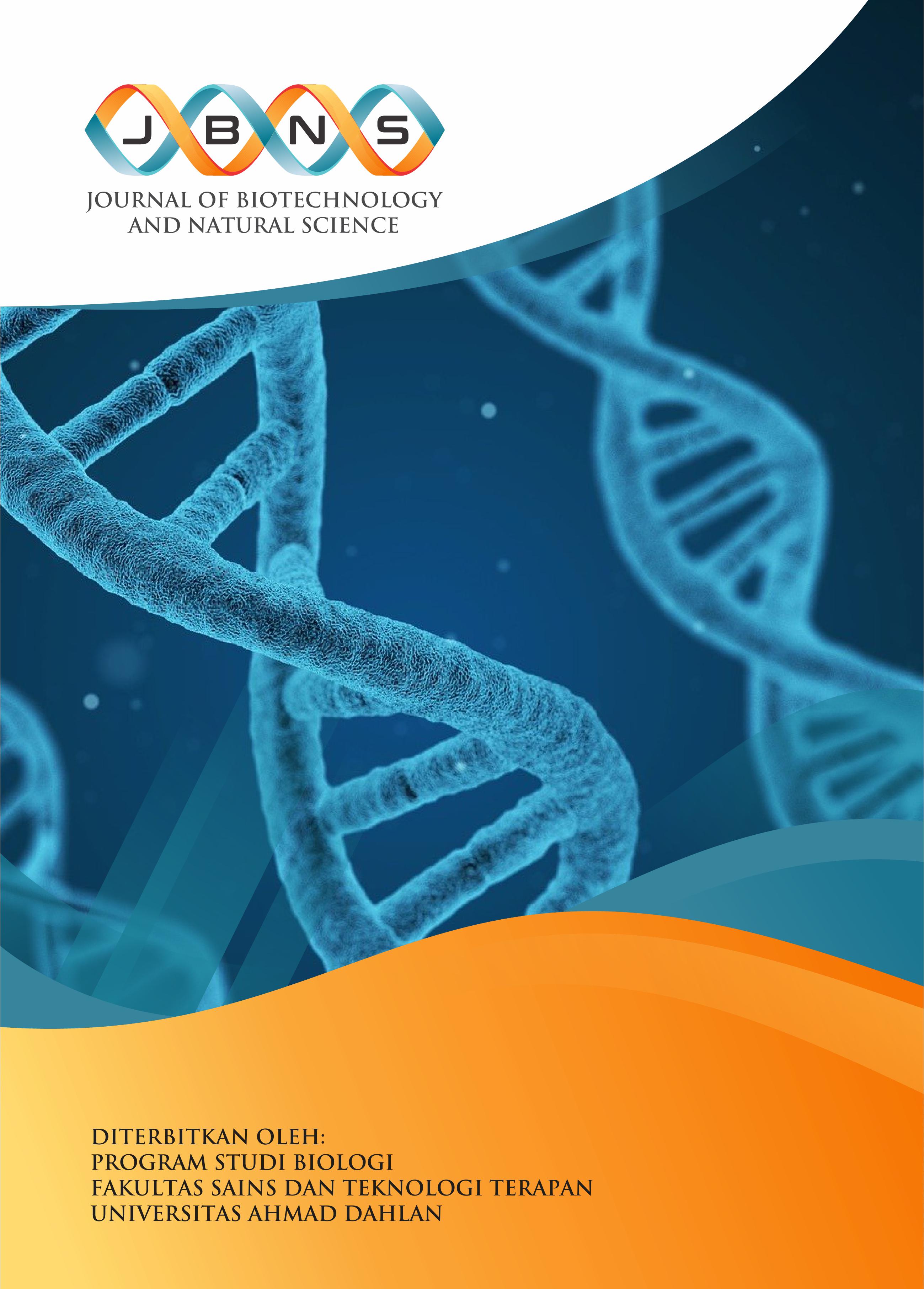Analysis of welfare levels, ecology, and animal management in Seblat Elephant Training Center, Bengkulu−Indonesia
DOI:
https://doi.org/10.12928/jbns.v1i2.5245Keywords:
animal welfare, conservation, Elephas maximus sumatranus, feed productivity, Sumatran elephantAbstract
The Sumatran elephant (Elephas maximus sumatranus) is a large mammal protected species and categorized as endangered according to the IUCN Red List. Habitat management includes control and regulation forest vegetation, open areas, water sources, salting sites, and resting areas for good animal welfare. The Seblat Elephant Training Center (SETC) is a conservation area to protect the Sumatran Elephant from extinction and is an ecotourism destination. This study aimed to analyze the welfare level and management of the Sumatran elephant in the SETC. This research used structured interview method to determine the indicators of the animal welfare level. Calculation of feed productivity and secondary data collection were used to improve the welfare level of the Sumatran Elephant. The research result stated that the welfare level of Sumatran elephant was classified as excellent (the implementation achievement value is 74.3%). In addition, the development of observations suggests that freedom from environmental discomfort needs to be improved by providing quarantine cages and reproductive cages to support natural behavior. Environmental conditions also support the welfare level of the Sumatran elephant. In conclusion, this facility is properly conducive to the welfare of Sumatran elephants.
References
Abdullah, Asiah, and Japisa, T. (2012). Karakteristik habitat Gajah Sumatera (Elephas maximus sumatranus) di kawasan ekosistem seulawah kabupaten aceh besar. Jurnal Ilmiah Pendidikan Biologi, 4(1), 41-45.
Ayudewanti, A. N. (2013). Pengelolaan dan tingkat kesejahteraan gajah sumatera (Elephas maximus sumatranus Temminck, 1847) di Taman Margasatwa Ragunan. Thesis. Bogor: Institut Pertanian Bogor.
Brown, J. L. (2019). Update on comparative biology of Elephants: factors affecting reproduction, health and welfare. In Advances in Experimental Medicine and Biology (Vol. 1200, pp. 243-273). Springer, Cham. https://doi.org/10.1007/978-3-030-23633-5_9
Fernando, P., Vidya, T. N. C., Payne, J., Stuewe, M., Davison, G., Alfred, R. J., Andau, P., Bosi, E., Kilbourn, A., and Melnick, D. J. (2003). DNA analysis indicates that Asian Elephants are native to Borneo and are therefore a high priority for conservation. PLOS Biology, 1(1), e6. https://doi.org/10.1371/journal.pbio.0000006
Garsetiasih, R., Rianti, A., and Takanjandji, M. (2018). Potensi vegetasi dan daya dukung untuk habitat Gajah Sumatera (Elephas maximus sumatranus) di areal perkebunan dan hutan produksi Kecamatan Sungai Menang, Kabupaten Ogan Komering Ilir. Jurnal Ilmu-Ilmu Hayati, 17(1), 1-90. https://doi.org/10.14203/beritabiologi.v17i1.2997
Halls, L. K. (1964). Forage and cattle management in longleaf-slash pine forests. US Government Printing Office.
Kuswanda, W. (2018). Karakteristik sosial ekonomi dan kebijakan mitigasi konflik Manusia-Gajah di Resort Besitang, Taman Nasional Gunung Leuser. Inovasi, 15, 153-162. https://doi.org/10.33626/inovasi.v15i2.49
Kuswanda, W., Situmorang., R. O. ., Berliani., K., Barus., S. P., and Silalahi., J. (2018). Konservasi dan ekowisata Gajah sebuah model dari KHDTK Aek Nauli (H. S. Alikodra & P. Setio (eds.)). IPB Press.
Martiani, Y. (2002). Manajemen pemeliharaan Gajah Sumatera di Taman Safari Indonesia, Bogor. Thesis. Bogor: Institut Pertanian Bogor.
Meytasari, P., Bakri, S., and Herwanti, S. (2014). Developing domestication criteria and evaluation for the Elephant nurturing practice: case study at Way Kambas National Park of East Lampung-Indonesia. Jurnal Sylfa Lestari, 2(2), 79-88. https://doi.org/10.23960/jsl2279-88
Novitri, A., and Abdullah, M. S. (2017). Studi kondisi pengasuhan Gajah Sumatera (Elephas maximus sumateranus) di Pusat Konservasi Gajah Saree, Aceh Besar. Biologi Edukasi, 9(1), 30-38.
Olson, D. (2004). Elephant husbandary resources guide. Allen Pr.
PHKA. (2011). Pedoman etika dan kesejahteraan satwa di Lembaga Konservasi.
Phuangkum, P., Lair, R. C., and Angkawanith, T. (2005). Elephant care manual for mahouts and camp managers. FAO Regional Office for Asia and the Pacific.
Rahmanda, S., Kamal, S., and Amin, N. (2020). Preferensi pakan Gajah Sumatera (Elephas maximus sumatranus) di Conservation Response Unit (CRU) Trumon Kabupaten Aceh Selatan. Prosiding Biotik, 8(1).
Shoshani, J., and Eisenberg, J. F. (1982). Elephas maximus. Mammalian Species, 182, 1-8. https://doi.org/10.2307/3504045
Suhada, N., Yoza, D., and Arlita, T. (2016). Habitat optimal Gajah Sumatera (Elephas maximus sumatranus Temminck.) di Pusat Latihan Gajah (PLG) Minas. Thesis. Riau: Riau University.
Suhartono, T., Susilo, H. D., Sitompul, A. F., Gunaryadi, D., Purastuti, E. M., Azmi, W., Fadhil, N., and Stremme, C. (2007). Strategi dan rencana aksi konservasi Gajah Sumatera dan Gajah Kalimantan 2007-2017. Direktorat Jenderal Perlindungan Hutan dan Konservasi Alam, Departemen Kehutanan.
Sukumar, R. (2003). The living elephants: evolutionary ecology, behaviour, and conservation. Oxford University Press.
Syarifuddin, H. (2008). Preferensi hijauan pakan Gajah Sumatera (Elephas maximus sumatranus): studi kasus di Kawasan Seblat. Jurnal Ilmiah Ilmu-Ilmu Peternakan Universitas Jambi, XI(4), 83-92.
Tohir, R. K., Mustari, A. H., and Masy'ud, B. (2016). Pengelolaan dan tingkat kesejahteraan Gajah Sumatera (Elephas maximus sumatranus Temminck, 1847) di Flying Squad WWF Taman Nasional Tesso Nilo RIAU. Media Konservasi, 21(2), 152-158.
Downloads
Published
Issue
Section
License
Copyright (c) 2022 Cassytta Dhiya Imtiyaaz, Amir Syarifuddin, Joko Triwanto, Rosyid Ridlo Al Hakim

This work is licensed under a Creative Commons Attribution-ShareAlike 4.0 International License.

